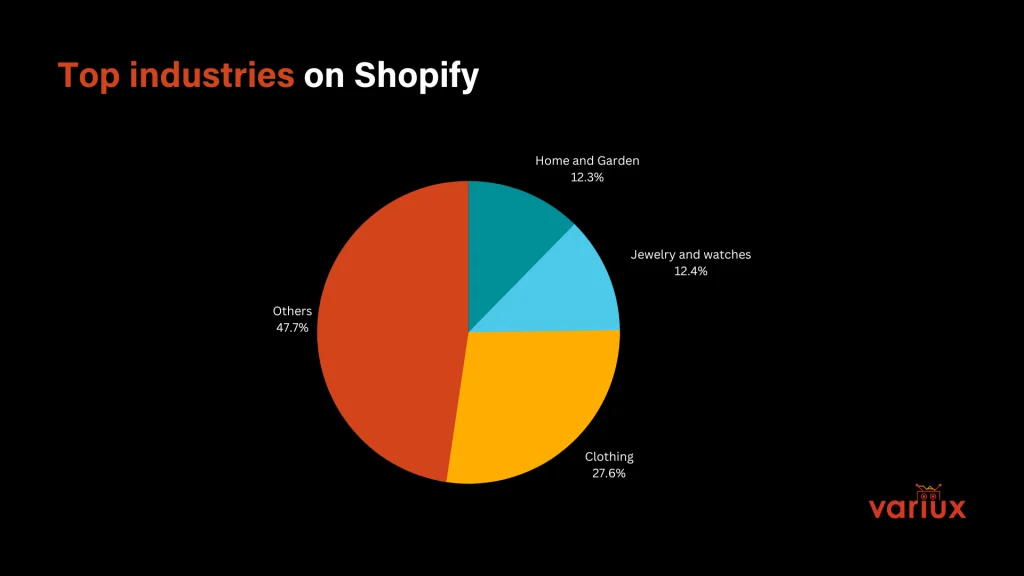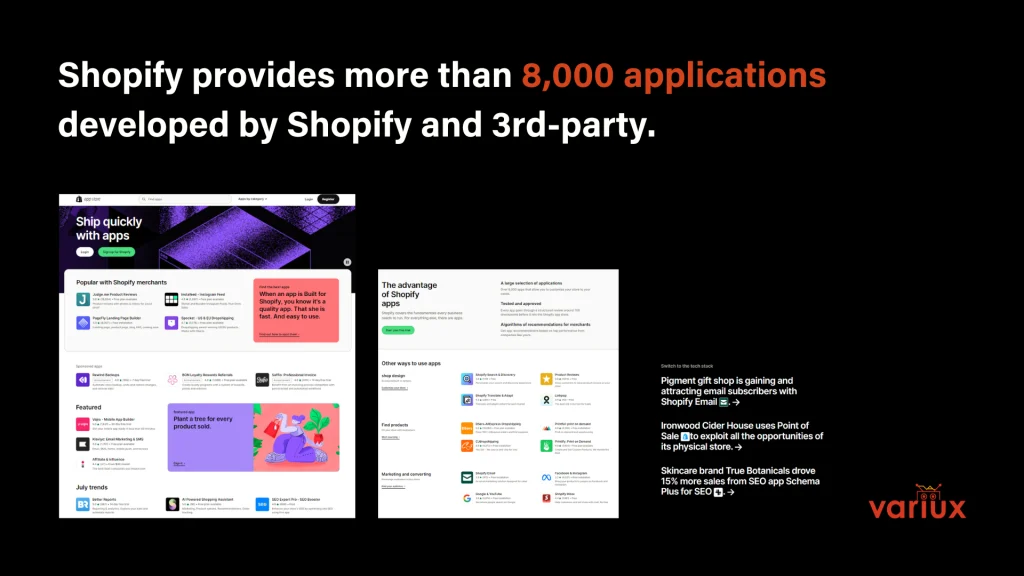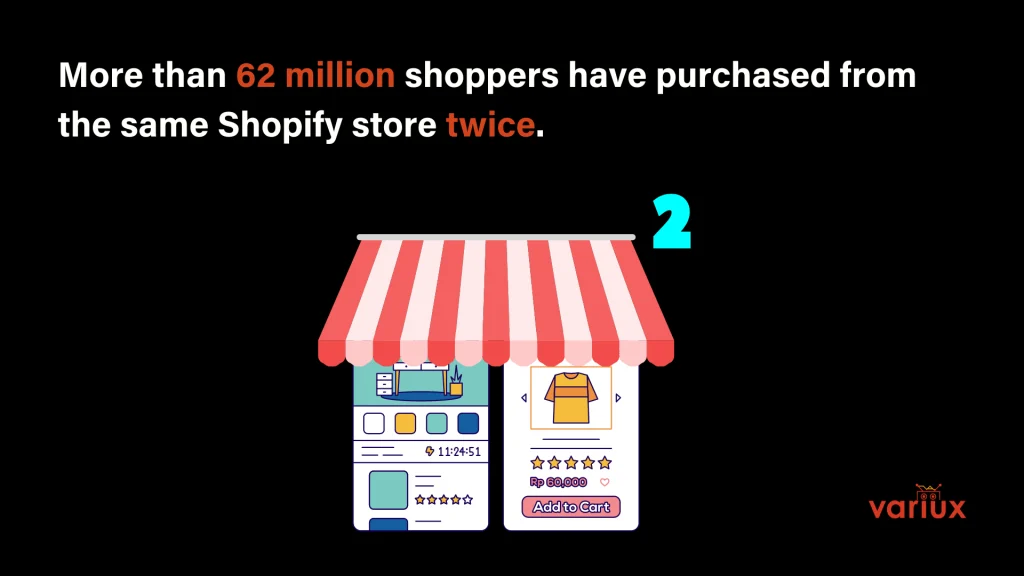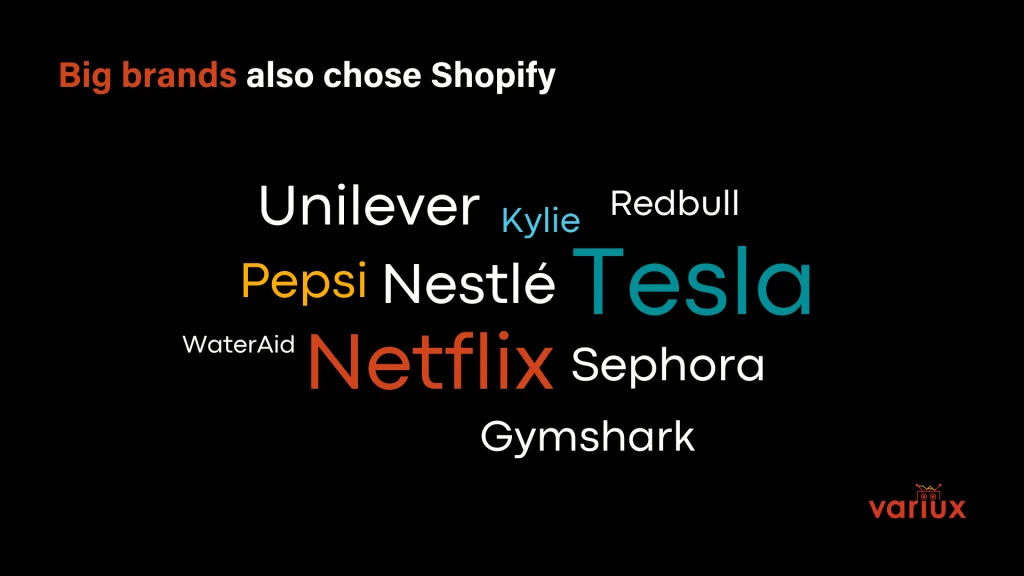Shopify is one of the world’s leading eCommerce platforms, making it easier for brands to sell online. If you are looking to expand your eCommerce business, the Shopify statistics below will help you understand this platform, thereby making the conversion easier. Let’s go through it together!

Outline
- Some key points about Shopify
- Shopify statistics
- Global Shopify statistics
- Statistics from the Shopify app
- Shopify Statistics for Business
- Featured Shopify stores
- Conclusion
Some key points about Shopify

- Shopify is a comprehensive e-commerce platform that allows businesses to easily build and manage an online store. Developed in 2006, Shopify specializes in selling ski equipment. Gradually Shopify has become a flexible platform, serving stores of various sizes and industries.
- Businesses using Shopify have many options to sell products on various channels such as Facebook, Instagram, eBay, Amazon, and TikTok. Furthermore, Shopify offers a “Buy Button” feature – allowing you to sell products directly from the Shopify store on any website or blog.
- Shopify supports 20 languages, providing a personalized online shopping experience through language preferences.
- Shopify revenue reaches more than 700 billion dollars after more than 17 years of operation. In 2022 alone, revenue reached $5.6 billion, up 26% from the previous year.
- Shopify dominates the e-commerce market in the United States. By December 2022, the platform holds a 25% market share, making it the top choice for many online businesses.
- Shopify is available in more than 175 countries, with the US accounting for 63% of Shopify stores.
- As of December 2022, there are a total of 2,002,945 Shopify stores in operation globally.
- 4.12 million e-commerce websites operate on the Shopify platform.
- Shopify is the most popular platform for brands in the sports, food, and fashion industries.
Shopify statistics

Shopify has many support features for businesses to launch an online store, helping them attract potential customers, increase traffic and successful conversion rates. In addition, Shopify Analytics provides insights from website data, which helps merchants to improve their marketing strategies.
Based on aggregated data, here are some key statistics highlighting Shopify’s role in the e-commerce world:
- In July 2022, Shopify captured an 11% market share in the e-commerce market.
- Two-thirds of Shopify’s revenue (75%) is generated from transaction fees, payment processing fees, and other services for merchants.
- Most Shopify stores are in the Clothing category, which accounts for 27.7% of the total stores. Followed by Jewelry & Watches with 12.5% and Home & Garden with 12.4%.
- Shopify Plus is used mainly in the US, accounting for 62% of users, followed by the UK with 10% and Canada with 9%.
- Shopify usage is widespread across many industries: retail at 18%, fashion, and apparel at 11%, and computer software at 6%.
- Little Data conducted a survey of 3,223 Shopify stores. The results show that Shopify’s average conversion rate is 1.4%. It’s worth noting that conversion rates vary significantly between different industries.
- Organic traffic contributes 90% of all traffic on Shopify, with popular keywords being “Shopify Login” and “Business Name Generator”.
- Shopify allows businesses to use 3D product images, which can increase conversion rates by up to 250%.
- By 2023, there will be more than 13,000 Shopify Plus stores in operation. There are almost 1,000 stores in the UK alone.
- The influence of social media driving mobile traffic is increasing.
- Shopify has about 2.1 million daily active users, and this number is forecast to increase dramatically in the future.
Global Shopify statistics

In March 2020, Shopify businesses made a strong global economic impact, with sales exceeding $319 billion. Overall, if all Shopify businesses were considered a single company, they would rank 7th in terms of revenue, ahead of giants like Apple, BP, and Volkswagen.
Shopify has revolutionized sales, by opening up new opportunities that were previously difficult to access, significantly impacting businesses on the platform.
- Shopify has had a significant impact on the global economy by contributing $319 billion to the overall operation. This number is expected to continue to increase in the coming years.
- In the UK market, Shopify holds a 20% market share, second only to WooCommerce with 25%.
- Shopify attracted 56.2 million visits in March 2022; 53.5 million in April and 55.8 million in May globally.
- Shopify holds 3.9% market share in Germany and 2.7% in Spain.
- In the Netherlands, Norway, and Luxembourg, online stores using Shopify account for 8%. While in Denmark, this number increased to 15%.
- In Sweden, online stores using Shopify make up 5%, and in the United Arab Emirates, 4% of online stores are built on the platform.
- In the UK, businesses using Shopify to start an online business increased significantly year-on-year – 106%.
- France has the least number of Shopify store transactions globally.
- Shopify leads the e-commerce market in the United States, with nearly 29% of websites adopting e-commerce technology.
- Although Shopify is an e-commerce platform that is popular with English-speaking countries. However, Shopify is expanding into the Asia-Pacific region through strategic partners and e-commerce companies in Indonesia, Thailand, and the Philippines.
- Although entering China faced challenges from Western businesses that went ahead, Shopify managed to capture a small part of this market. Shopify currently powers about 8,024 stores in China.
- In the context of rapidly expanding global e-commerce, Shopify aims to build “the world’s first global retail operating system”.
Statistics from the Shopify App Store

Shopify App Store offers many tools to help millions of stores optimize their business. With over 8,000 apps developed by Shopify and third-party services, businesses can find a variety of apps to suit their needs such as inventory management, remote shipping, SEO marketing, and store customization.
- Over 87% of businesses use Shopify apps, with each business using an average of 6 apps.
- Shopify app development partners raised $233 million (in 2020).
- Popular apps used by Shopify businesses are Facebook, Google, Shopify Email, Point of Sale, PageFly Landing Page Builder, Buy Button, and many more.
Shopify Statistics for Business

- According to Statista, Shopify stores saw a 50% increase in sales in 2019, while the global e-commerce market grew by only 21%.
- More than 50% of Shopify stores have repeat customers, with an average customer making 3.8 purchases from the same online store. This shows that Shopify businesses provide a seamless and optimal customer experience, leading to repeat purchases.
- The average revenue per customer in 2022 is $88, compared to $72 per customer in 2020.
- Shopify conversion rate shows email as the tool with the highest rate: 4.29%. Product search ranked second with 3.04%, direct examination with 2.93%, and social networks with 1.81%. Among the email marketing providers for Shopify, Klaviyo takes the lead, outperforming rival Mailchimp.
Featured Shopify stores

Shopify provides e-commerce solutions for businesses of all sizes: From small fashion stores to famous brands, global FMCG companies, or home brands choose the Shopify platform. Some well-known companies that use Shopify to sell online include Netflix, Penguin Books, and Staples.
Here are some interesting things about companies and brands using Shopify:
- Kylie & Kriss Jenner has been using Shopify Plus since 2014 to operate the famous cosmetics brand Kylie Cosmetics.
- Famous couple David and Victoria Beckham are also Shopify customers. Their companies “Eyewear by David Beckham” and “Victoria Beckham” operate on the eCommerce platform Shopify.
- Shopify is also the e-commerce platform used by singer Adele for her store.
- Sports brands like Gym Shark, LA Lakers, Decathlon, and Fitbit use the Shopify platform to sell their products globally.
- Not only big brands, Shopify is also widely used by many small businesses. For example, Style Factory, Little Paper Mill, The Cufflink Store, etc.
Conclusion
From the statistics on business results and growth rates, it can be seen that Shopify is a platform worth considering for businesses. The “famous” brands in the eCommerce market such as Tesla, Deloitte, and Forbes have also used this platform to operate their businesses. You can refer to their store-building secrets to optimize your website and increase conversion rates for your business.
*References: Shopify, Style Factory, Builtwith, Techwireasia, Market Splash.
